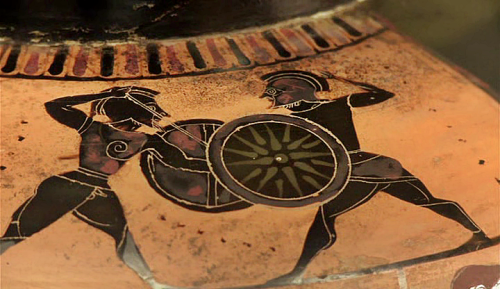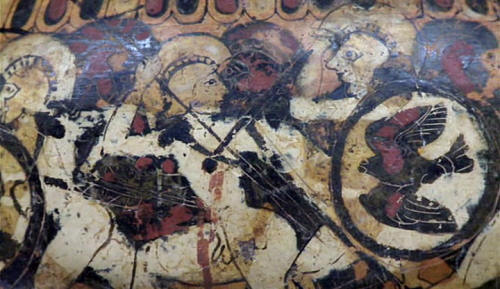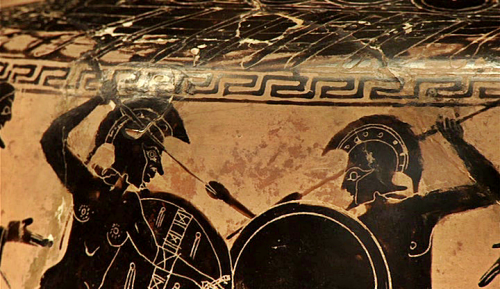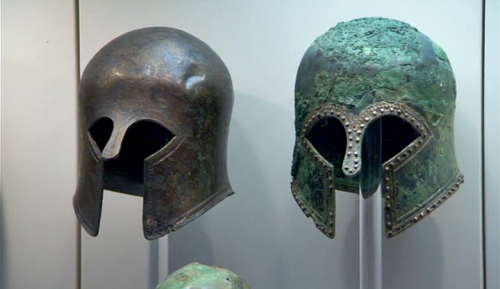Ancient Worlds - BBC Two Episode 2 “The Age of Iron”Greeks at warThe Greek city-sta
Ancient Worlds - BBC Two Episode 2 “The Age of Iron”Greeks at warThe Greek city-states often fought each other. There were long periods of peace and many alliances but the powerful motives of territorial expansion, booty, revenge, honour, and the defence of liberty ensured that throughout the Archaic and Classical periods the Greeks were regularly engaged in warfare both at home and abroad. During the Archaic Period they relied on their own citizens to fight. These armed infantry soldiers were called hoplites; they fought as a group, in an organized, dense line of battle: the phalanx. Every hoplite carried a shield which covered the wearer’s front and the right side of the man to his left. There were no uniforms or insignia and as soon as the conflict was over the soldiers would return to their homes. Warfare in Ancient Greece changed dramatically as a result of the Persian Wars. To fight the enormous armies of the Achaemenid Empire many city-states made alliances between them and began to maintain a small professional force which could be augmented by the main citizen body if necessary. Sparta and Athens, pre-eminent powers during the Persian War, fought a long war, the Peloponnesian War (from 431 to 404 BC). This war saw further development of the nature of warfare, strategy and tactics. Fought between leagues of cities dominated by Athens and Sparta, the increased manpower and financial resources increased the scale, and allowed the diversification of warfare. There was increased reliance on naval battles, blockades and sieges.PART I -- source link
Tumblr Blog : richard-miles-archaeologist.tumblr.com
#richard miles#ancient worlds#ancient greece#warfare#hoplite#phalanx#persian wars#peloponnesian war#achaemenid empire#sparta#athens#archaic period#ancient art#bbc two#screencap




